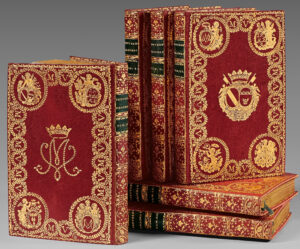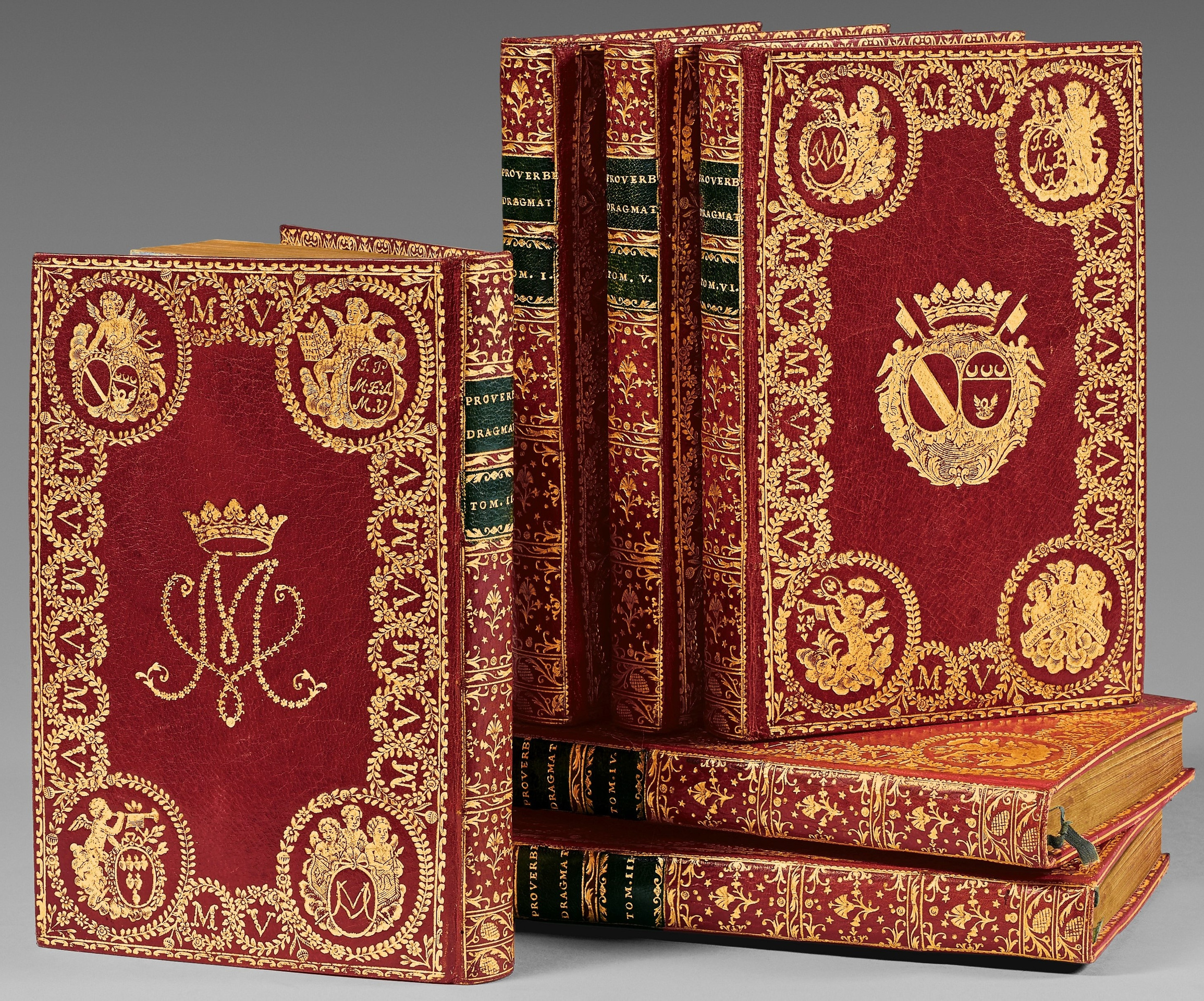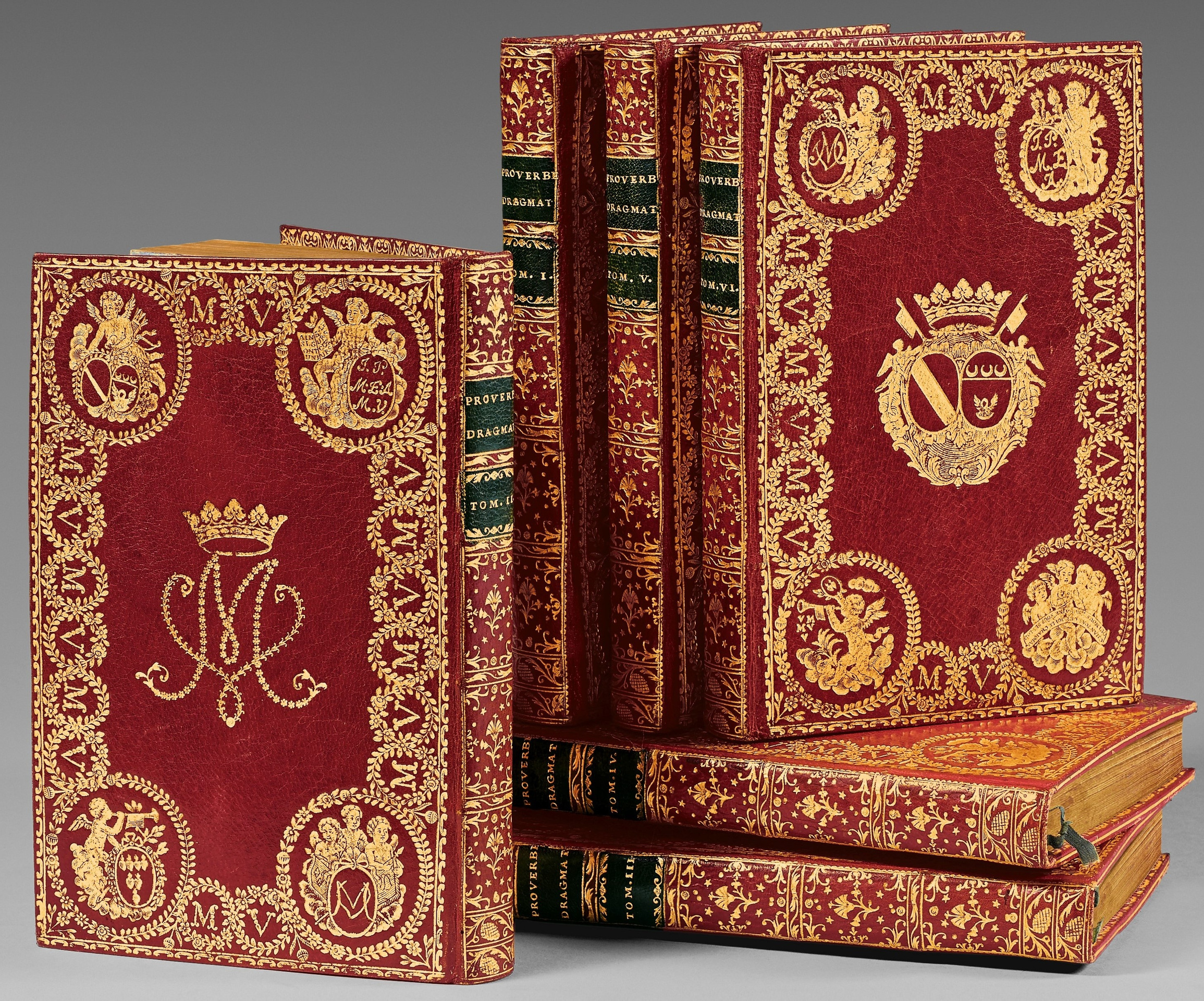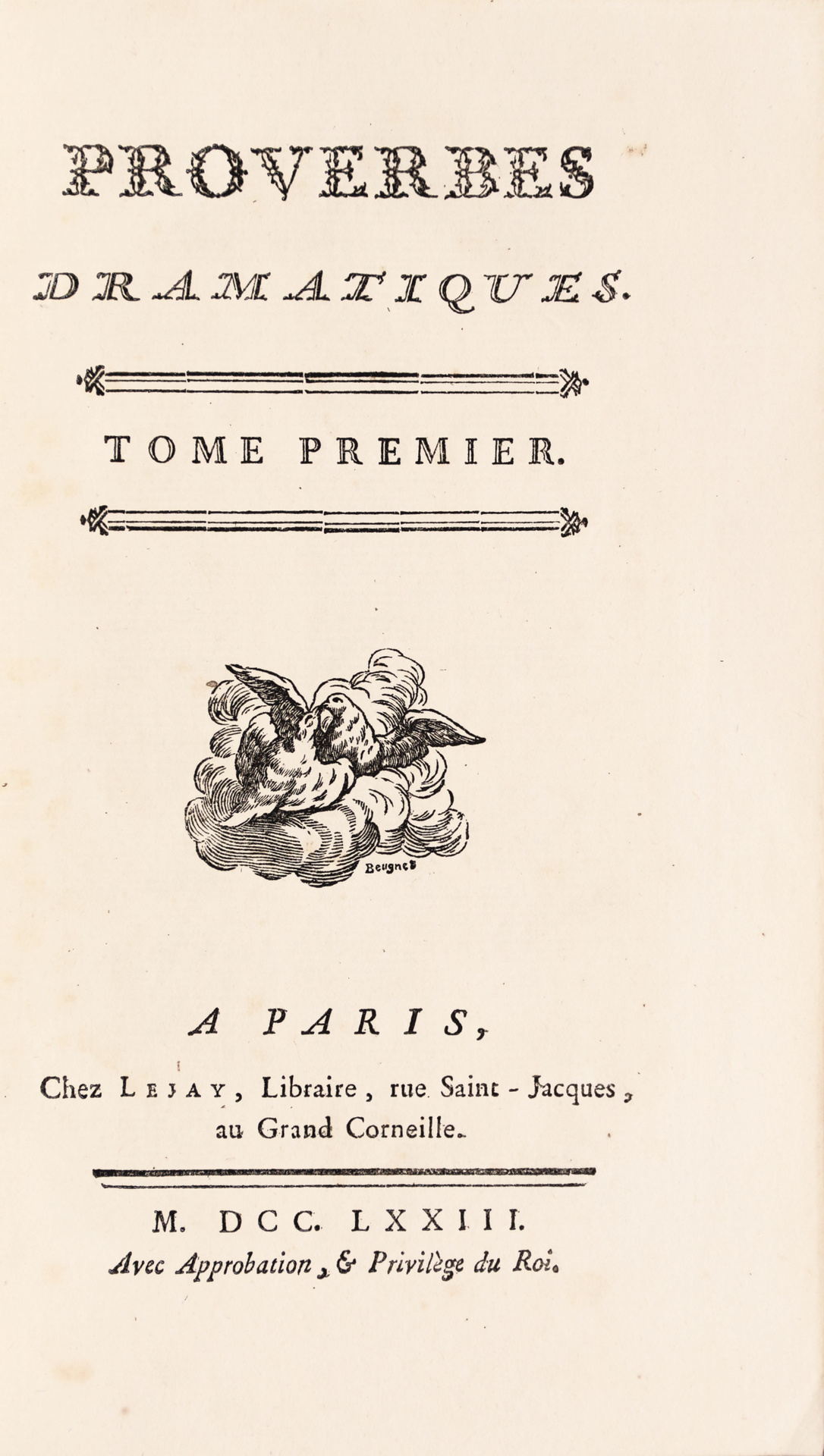Paris, Lejay, 1773.
6 8vo volumes [202 x 130 mm], red morocco, flat spine decorated with borders and fleurons, green morocco lettering pieces, large gilt frame with small medallions decorating the covers, bearing the cypher “MV” repeated 8 times on lateral borders; large medallions on each corner illustrated with full gilt cherubs; gilt arms in the center of the first covers and within one of the medallions, the cipher “MV” crowned and gilt in the center of the second covers, gilt inner border, gilt edges, blue watered silk doublures and endpapers. One of the most exceptional French bindings of the Age of Enlightenment. Contemporary binding.
Extremely rare edition, partly in first edition, of 82 plays by the painter, architect, engraver and French dramatic author Carmontelle (Louis Carrogis also called, 1717-1806), “reader of the duke of Chartres” published in 1768 to 1773.
The proverbs 60 to 82 are here in first edition, the proverbs 1 to 33 were initially published in 1768 and the 34 to 59 in 1769.
On the frontispiece, there is a licentious allegory copper-engraved by Jean-Baptiste Delafosse.
“The reader of the duke of Chartres brings here at completion point this genre born in the previous century at the Hôtel de Rambouillet and fond of literary games. These Dramatic proverbs are characterized by their brevity (one act, one to sixteen scenes), their concision, even their abruptness and kind moralization. They concretely illustrate a moral truth summed up in the final “word” left to the spectator’s wisdom. It is actually a genre partly recreational, partly literary, between the tribute play of circumstance to the lord, the framework is left to the noble amateur actors’ improvisation and the comedy is reduced. The interest of these sketches is in the wide social range represented: the world of religious, militaries, magistrates, farmers, nobles, and small Parisian bourgeoisie of which Carmontelle paints with accuracy the language, the manners, the aspirations and the daily life. The impression of reality is increased by the absence of literary types, complex intrigues and brilliant dialogues. The current affairs appear in the allusions of fashionable entertainments, in artistic quarrels, in shows in vogue. A great attention is given to material conditions of the representation, which is underlined by scenic indications regarding the actors’ movements, their tones, mimics and especially the costumes of popular classes. However we can, like some contemporaries did back then, reproach to these playlets their repeatability, their relative vacuity, their unfortunate construction or their dullness. It is though being unaware of their conditions of ephemeral emergence, played by noble actors in the tradition of society theatre so importantly enhanced during this second part of the 18th century. A certain number of characteristics find themselves rightfully justified: the attention given to the representation which appears like a celebration, the predilection for the spectacular, the parts of composition and social cross-dressing allowing a temporary and harmless carnival. Nobility watches the image it sends back of itself. Cultural allusions, literary influences confessed (essentially from Molière and Marivaux), the pitiless satire of the outcast (the parvenus among others) constitute the limits of the authorized mingling […] on the stage of a society theatre. Literary and sociologically, the Proverbs are a precious testimony of private theatre at the end of the century.” (Marie-Emmanuelle Plagnol-Dieval).
Extraordinary Parisian love binding executed in 1773 for the marchioness de Menou. Anne-Isabelle-Michelle de Chaspoux de Verneuil had married René Louis Charles de Menou in 1769.
The medallions, circled with floral garlands, contain the capital letters M(enou) and V(erneuil) separated, jointed or interlaced, as well as flamed hearts and motos: « Ainsi sont unis leurs cœurs » et « Chantons ce couple charmant qui nous enchaîne sous ses loix ».
Certainly one of the most achieved French bindings form the Age of Enlightenment.




